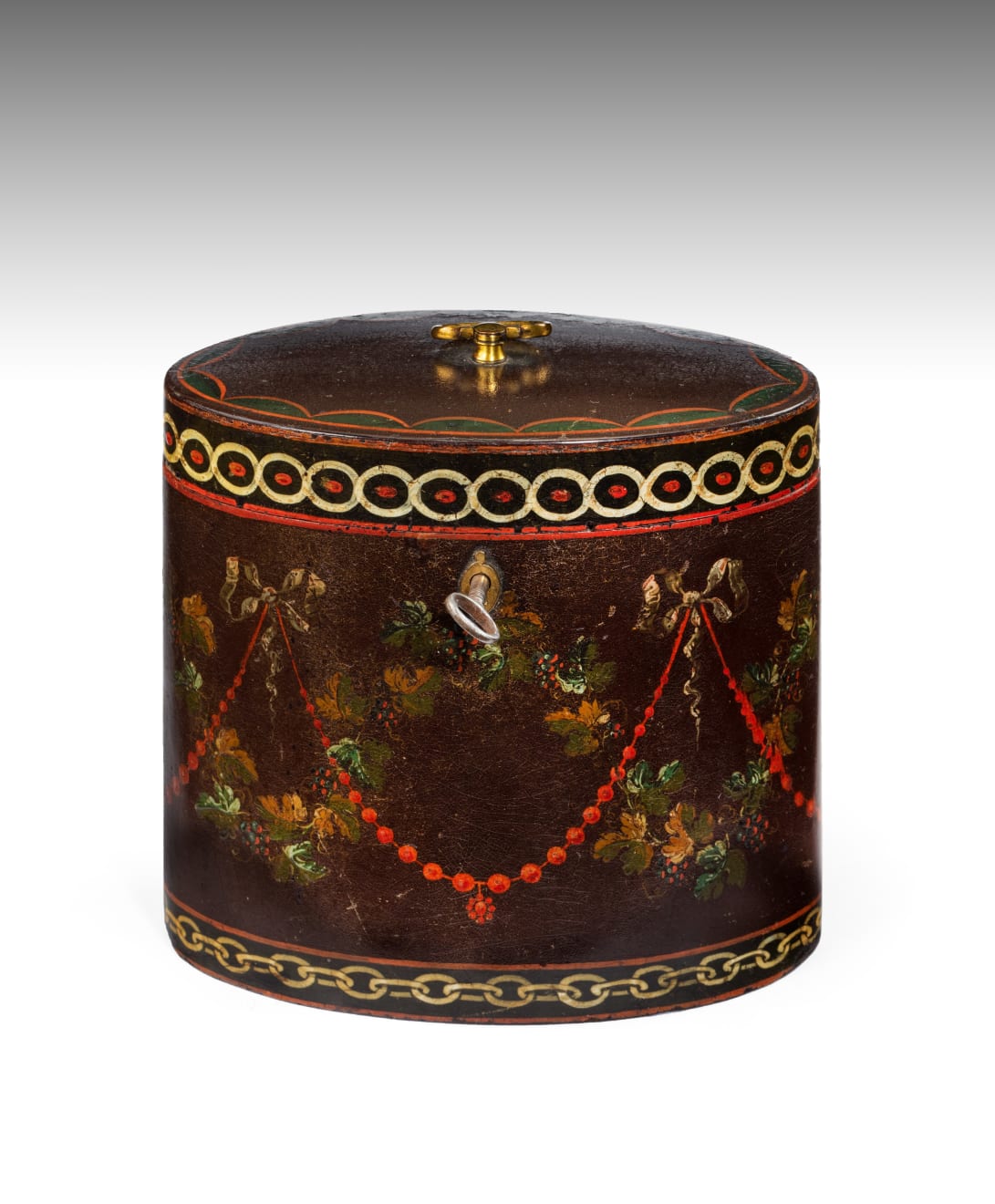George III Oval Papier Mâché Tea Caddy
ENGLAND, CIRCA 1780
11.4 x 12.4 x 7 cm
4 ½ x 5 x 2 ¾ in
4 ½ x 5 x 2 ¾ in
6805
Further images
George III oval tea caddy in papier mâché, decorated with guilloche, coral beads tied by bows with wines and grapes. With a lidded compartment and a lock to the front...
George III oval tea caddy in papier mâché, decorated with guilloche, coral beads tied by bows with wines and grapes. With a lidded compartment and a lock to the front with key.
In the Georgian period, tea drinking was a fashionable pastime, having been introduced to Britain in the late 17th century. Tea was an expensive commodity, as were all the items related to its consumption. Tea therefore required proper storage and caddies often had locks. Tea caddies were placed on the table as tea was served and were often highly decorative. The drinking of tea demonstrated wealth, domesticity and genteel informality, epitomising civilised behaviour in the eighteenth and nineteenth centuries. A. Hepplewhite & Co. published designs for both ‘tea caddies’ and ‘tea chests’, which were usually larger, in The Cabinet-Maker and Upholsterer’s Guide, 1788 (2nd edition 1789, 3rd Edition 1794).
Oval caddies were a popular form in this period and painted examples can be found in the Victoria and Albert Museum (W.69:1, 2-1919) and the National Trust Collection at Greys Court, Oxfordshire (NT 196402).
In the Georgian period, tea drinking was a fashionable pastime, having been introduced to Britain in the late 17th century. Tea was an expensive commodity, as were all the items related to its consumption. Tea therefore required proper storage and caddies often had locks. Tea caddies were placed on the table as tea was served and were often highly decorative. The drinking of tea demonstrated wealth, domesticity and genteel informality, epitomising civilised behaviour in the eighteenth and nineteenth centuries. A. Hepplewhite & Co. published designs for both ‘tea caddies’ and ‘tea chests’, which were usually larger, in The Cabinet-Maker and Upholsterer’s Guide, 1788 (2nd edition 1789, 3rd Edition 1794).
Oval caddies were a popular form in this period and painted examples can be found in the Victoria and Albert Museum (W.69:1, 2-1919) and the National Trust Collection at Greys Court, Oxfordshire (NT 196402).








